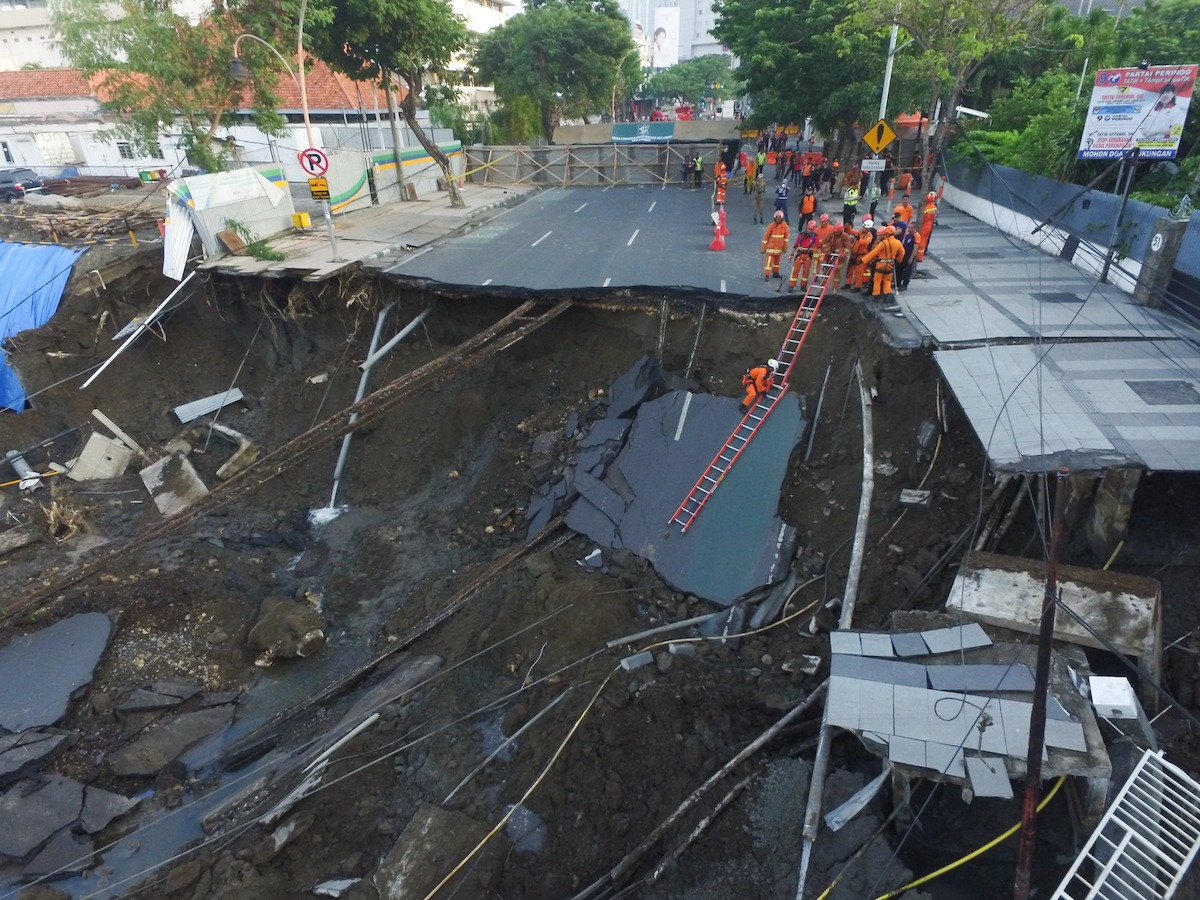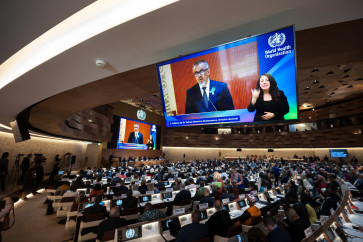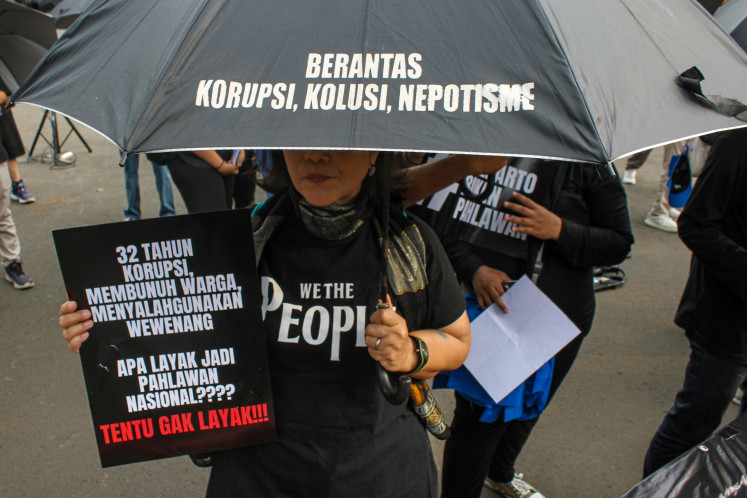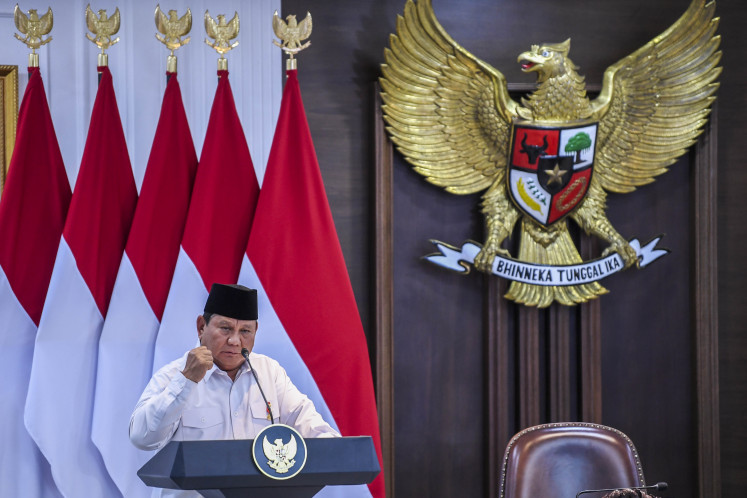Surabaya vows to fill in giant sinkhole in 10 days
Surabaya’s building inspector, Mudji Irmawan, said his team could not confirm whether the sinkhole was caused by the expansion project of Siloam Hospital
Change text size
Gift Premium Articles
to Anyone
 Firefighters check the condition of the soil inside a sinkhole on Jl. Raya Gubeng in Surabaya in East Java on Dec. 19. (Antara/Didik Suhartono)
Firefighters check the condition of the soil inside a sinkhole on Jl. Raya Gubeng in Surabaya in East Java on Dec. 19. (Antara/Didik Suhartono)
T
he Surabaya administration has promised that in 10 days the busy road of Jl. Raya Gubeng will be open again to motorists after they finish filling in the giant sinkhole that opened up on Tuesday evening.
Deputy Mayor Wisnu Sakti Buana said he did not yet know who actually should take responsibility for funding the repair. “We will repair it as soon as possible. Better to make sure it’s functioning rather than wait for the private sector, because [the repair] is crucial,” he said on Wednesday.
He said the funds would be discussed with Mayor Tri Rismaharini but the administration had emergency money for disasters that could be used for Jl. Raya Gubeng.
At present, the administration’s building inspector is teaming up with the National Police’s forensics lab and a team of geologists from 10 November Insitute of Technology (ITS) to investigate the cause of the hole, which measures about 30 meters wide and 15 meters deep.
Surabaya’s building inspector, Mudji Irmawan, said his team could not confirm whether the sinkhole was caused by the expansion project of Siloam Hospital in Surabaya. The project is right next to the sinkhole and earlier several officers including deputy mayor Wisnu and Surabaya Development Planning Agency head Eri Cahyadi said the sinkhole was related to the Siloam project.
“We’re suspecting three things could be the cause. First the water in the ground, second the ground anchor and third the depth of the digging. But we cannot make any conclusion that this is due to a mistake in the construction project. It is not for us to say,” Mudji said.
He said how quickly the administration would be able to fix the road depended on the availability of the materials like double sheet piles, which will take time to procure.
Geologist and disaster mitigation expert from ITS, Amien Widodo, said the sinkhole in Gubeng was different from the one in Fukuoka, Japan.
In November 2016, a giant sinkhole opened on a road in Fukuoka. A time lapse video of the repair went viral globally as the Japanese authorities managed to fill in the hole in 48 hours and reopen it within a week of the disaster. The Fukuoka administration said it believed the sinkhole was related to construction work on an underground train line.
“In Fukuoka, the street was built on limestone soil. But it’s not the case here. ITS has researched that the soil in this area is sedimentary soil,” said Amien.
Amien said the Surabaya administration needed to know about the soil movement in the area after the sinkhole. He said the city needed to scan the area from above, measure soil movement using GPS and drill the soil at several spots as deep as 30 meters to find out what kind of soil existed deep underground. (evi)









